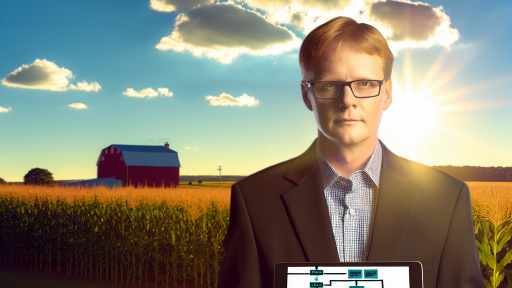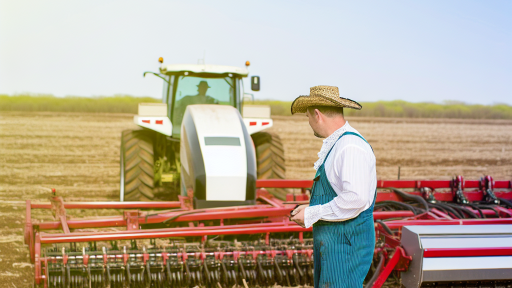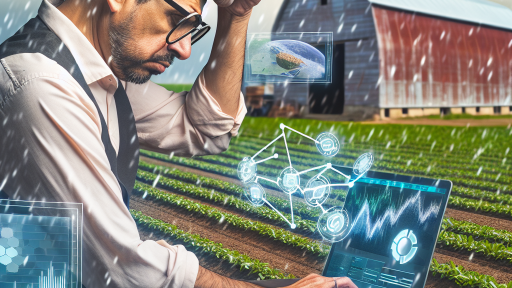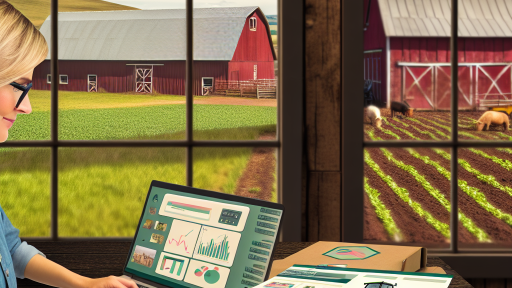Introduction to Soil Health and Its Importance in Agriculture
Soil health plays a crucial role in agricultural productivity.
Healthy soil supports plant growth by providing essential nutrients.
It also enhances water retention and improves drainage.
Furthermore, healthy soil promotes a balanced ecosystem in farmland.
Soils rich in organic matter foster greater biodiversity.
This biodiversity includes beneficial microorganisms that enhance soil fertility.
The Role of Soil in Crop Production
Soil acts as a medium for plant roots to anchor and grow.
It also holds moisture that is critical for plants to thrive.
Healthy soil contributes to better crop yields and quality.
Moreover, it reduces the need for chemical fertilizers and pesticides.
Economic Benefits of Soil Health
Investing in soil health leads to increased agricultural profits.
Farmers experience reduced costs related to inputs such as fertilizers.
Additionally, healthy soils can mitigate the impact of drought.
As a result, farmers secure their livelihoods through sustainable practices.
Environmental Considerations
Healthy soils help in climate change mitigation.
Transform Your Agribusiness
Unlock your farm's potential with expert advice tailored to your needs. Get actionable steps that drive real results.
Get StartedThey sequester carbon, reducing greenhouse gas emissions.
Moreover, they enhance water quality by filtering pollutants.
Protecting soil health is vital for maintaining ecological balance.
Overview of Drone Technology in Modern Farming Practices
Introduction to Drone Technology
Drones have revolutionized the agricultural landscape.
Modern farmers utilize them for precise, efficient monitoring.
These technologies provide valuable insights into crop health.
Additionally, they help optimize resource management.
Types of Drones Used in Agriculture
Farmers employ various types of drones for specific tasks.
Fixed-wing drones cover larger areas efficiently.
Multi-rotor drones offer versatile maneuvering capabilities.
Hybrid drones combine the advantages of both types.
Applications of Drones in Farming
Drones assist in crop monitoring and mapping.
They provide real-time data to improve decision-making.
Farmers use them to assess soil conditions and moisture levels.
Moreover, drones facilitate precision spraying of pesticides.
This targeted approach minimizes chemical usage and waste.
Impact on Soil Health
Drones contribute significantly to enhancing soil health.
They monitor soil quality and identify areas needing attention.
With detailed aerial imagery, farmers can visualize problem zones.
This helps in implementing corrective measures effectively.
Future of Drone Technology in Agriculture
The future of drones in farming appears promising.
Technological advancements will improve accuracy and efficiency.
Integration with AI and machine learning enhances decision-making.
Ultimately, drones will play a crucial role in sustainable agriculture.
Showcase Your Farming Business
Publish your professional farming services profile on our blog for a one-time fee of $200 and reach a dedicated audience of farmers and agribusiness owners.
Publish Your ProfileIntegration of Drones in Soil Health Assessment
Benefits of Drone Technology
Drone technology enhances soil health assessment significantly.
It allows for rapid data collection over vast agricultural areas.
Farmers gain insights into soil conditions that were hard to access.
Additionally, drones help prioritize areas for soil improvement.
Data Collection Methods
Drones utilize various sensors for effective soil data collection.
Multispectral cameras capture images in different light wavelengths.
They identify nutrient deficiencies by analyzing vegetation indices.
Thermal sensors detect soil moisture levels accurately.
Precision Agriculture Practices
Drones facilitate precision agriculture practices among farmers.
They deliver targeted soil amendments to specific areas.
Using drones reduces waste and enhances resource efficiency.
Farmers can adjust their strategies based on precise data.
Integration with Other Technologies
Drones work well with other agricultural technologies.
Farmers can combine drone data with satellite imagery.
This integration offers a comprehensive view of field conditions.
Furthermore, data analytics can interpret complex datasets effectively.
Challenges in Implementation
Despite their advantages, some challenges exist in drone use.
Initial investment costs can be significant for small farms.
Additionally, regulatory hurdles may limit operational flexibility.
Training is essential for farmers to maximize drone utility.
Gain More Insights: How Agri-Fintech Is Improving Access To Credit And Financing For Farmers
Precision Agriculture: Mapping Soil Nutrients with Drones
The Role of Drones in Soil Health
Drones revolutionize the way farmers assess soil health.
These flying machines offer precise imaging technologies.
As a result, they map nutrient distribution effectively.
Drones collect data quickly over large areas.
Understanding Soil Nutrient Requirements
Every crop type has unique nutrient requirements.
Farmers must understand these needs for optimal growth.
Soil tests provide baseline data on nutrient levels.
Drones supplement this information with real-time data.
Utilizing Drone Technology for Mapping
Drones equipped with multispectral cameras capture data.
This technology detects differences in vegetation health.
Farmers can visualize areas needing nutrient interventions.
Consequently, they can make informed decisions quickly.
Benefits of Drone-Assisted Farming
Drone-assisted farming enhances efficiency in nutrient management.
Farmers save both time and resources by targeting specific areas.
This approach reduces waste and improves crop yields.
Moreover, it fosters sustainable agricultural practices.
Integrating Drone Data into Farm Management
Drones provide comprehensive data for precision farming.
Farmers can integrate this information into management software.
This integration informs better decisions regarding fertilization.
Showcase Your Farming Business
Publish your professional farming services profile on our blog for a one-time fee of $200 and reach a dedicated audience of farmers and agribusiness owners.
Publish Your ProfileConsequently, soil health improves while maximizing yields.
Gain More Insights: The Impact Of Biotechnology On Sustainable Farming
Utilizing Drone-Delivered Soil Amendments for Enhanced Fertility
The Role of Drones in Agriculture
Drones are transforming the way farmers manage their fields.
They provide precise data collection for soil health analysis.
Additionally, drones enhance efficiency in delivering soil amendments.
Understanding Soil Amendments
Soil amendments improve soil structure and fertility.
Common types include organic matter, minerals, and fertilizers.
These amendments boost nutrient levels and water retention.
Drone Applications for Soil Health
Drones enable the targeted delivery of soil amendments.
This method reduces waste and ensures even distribution.
Moreover, drones can access hard-to-reach areas with ease.
Benefits of Drone-Delivered Soil Amendments
- Improved soil fertility and plant health.
- Time-saving and cost-effective compared to traditional methods.
- Minimal soil disturbance during application.
Sustainable Practices with Drone Technology
Utilizing drones aligns with sustainable farming practices.
It reduces chemical runoff and promotes environmental health.
Furthermore, it supports precision agriculture techniques.
Case Studies and Success Stories
Farmers like Laura Thompson have successfully used drones.
Her crop yields increased significantly after drone applications.
Similarly, Green Fields Agriculture reported higher soil health metrics.
Discover More: Choosing The Right Automated Machinery For Your Farm
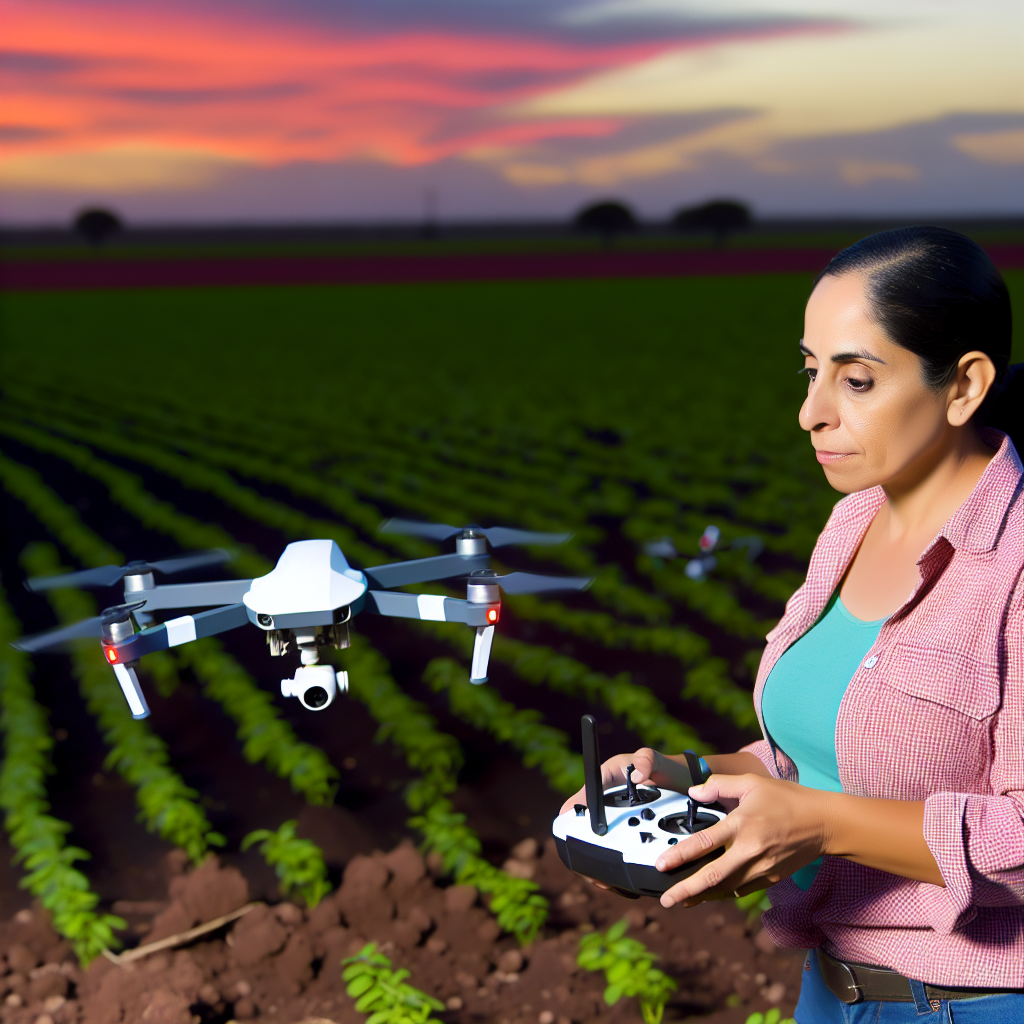
Monitoring Soil Moisture Levels through Drone Imagery
Introduction to Drone-Assisted Soil Monitoring
Drone technology revolutionizes agriculture by enhancing soil monitoring practices.
Farmers can now efficiently track soil moisture levels over large areas.
This method improves decision-making regarding irrigation and crop management.
Benefits of Using Drones for Soil Moisture Assessment
Drones provide real-time data that significantly aids farmers.
They cover vast fields quickly, saving time and labor costs.
Moreover, drone imagery enables precise identification of moisture variations.
This information allows for targeted irrigation strategies.
How Drone Imagery Works
Drones capture high-resolution imagery using specialized sensors.
These sensors include thermal and multispectral imaging systems.
Thermal imagery highlights areas with different moisture levels.
Consequently, this data helps in understanding soil health conditions.
Implementing Drone Technology on Farms
Farmers must consider essential steps to integrate drones into their practices.
- First, assess the farm’s specific monitoring needs.
- Next, choose a suitable drone equipped with the necessary sensors.
- Additionally, train staff on operating drones and analyzing data.
Furthermore, establish a schedule for regular monitoring sessions.
Case Studies of Successful Implementation
Several farmers have successfully incorporated drone technology.
For instance, Daniel Marsh from Valley Field Farms reports remarkable results.
He noted a significant decrease in water usage after implementing drone monitoring.
Another success story comes from Green Pastures Ag, where soil health improved greatly.
Future of Drone-Assisted Soil Monitoring
The future of agriculture looks promising with continuing advancements in drone technology.
Enhanced data analytics will provide even deeper insights for farmers.
Integration with other technologies, like AI, will further optimize agricultural practices.
Find Out More: Securing Agricultural Supply Chains With Blockchain Technology
Case Studies: Successful Implementation of Drone Technology for Soil Health
Innovative Use in Precision Agriculture
Drones revolutionize precision agriculture by monitoring soil health effectively.
Showcase Your Farming Business
Publish your professional farming services profile on our blog for a one-time fee of $200 and reach a dedicated audience of farmers and agribusiness owners.
Publish Your ProfileFarmers use aerial imagery to assess soil moisture levels.
This technology allows targeted irrigation, reducing water usage.
Moreover, it identifies nutrient deficiencies across fields.
Such data enables farmers to apply fertilizers more accurately.
Case Study: Green Fields Farm
Green Fields Farm adopted drone technology in Tennessee.
They implemented drone surveys to analyze soil composition.
This analysis guided their crop selection and management practices.
The results showcased increased crop yields by 20% in two years.
Farmers realized significant cost savings in fertilizer expenses.
Integration with Soil Health Metrics
Drones collect data on various soil health indicators.
These include organic matter content and erosion levels.
Farmers can view detailed maps of their fields instantly.
This visibility helps in making informed decisions for improvements.
Additionally, drones highlight areas needing immediate attention.
Case Study: Harvest Innovations Co.
Harvest Innovations Co. utilized drone data in California.
Their drones captured high-resolution images for soil analysis.
Using this information, they improved their crop rotation strategies.
Ultimately, they enhanced soil biodiversity on their farm.
Consequently, soil health significantly improved over time.
Leveraging AI and Machine Learning
Combining drones with AI enhances soil management further.
AI analyzes drone-collected data for deeper insights.
It predicts potential soil health issues before they become critical.
Farmers can then implement preventative measures effectively.
Case Study: EcoGrow Farms
EcoGrow Farms in Texas integrated drone technology with AI.
Their approach increased efficiency in managing cover crops.
They monitored crop growth status regularly using drones.
This led to enhanced soil cover and reduced erosion rates.
Moreover, they reported better resilience against drought conditions.
Future Trends in Drone-Assisted Farming
The future of drone technology looks promising for soil health.
Advancements in sensor technology will provide even more data.
Drones will likely be equipped with multi-spectral sensors.
This equipment will enable precise monitoring of soil health indicators.
As technology evolves, more farmers can adopt these innovative practices.
Future Prospects of Drone-Assisted Farming in Soil Management
Technological Advancements
Drones are evolving rapidly in agricultural applications.
New sensors improve soil monitoring capabilities.
For instance, multispectral cameras detect variations in soil health.
Moreover, advancements in AI enable precise data analysis.
Enhanced Data Collection
Drones facilitate real-time data collection over vast areas.
Farmers gain insights into soil composition and moisture levels.
This data supports informed decision-making for soil management.
Showcase Your Farming Business
Publish your professional farming services profile on our blog for a one-time fee of $200 and reach a dedicated audience of farmers and agribusiness owners.
Publish Your ProfileAdditionally, high-resolution imaging identifies pest infestations quickly.
Improved Precision Agriculture
Drone technology enhances precision agriculture techniques.
Farmers can target specific areas for fertilizer application.
This approach reduces waste and enhances soil health.
Consequently, crop yields improve significantly.
Sustainable Practices and Soil Conservation
Drones promote sustainable farming practices effectively.
They help monitor crop rotations and cover cropping strategies.
Moreover, farmers can assess the impact of different tillage methods.
This information fosters better soil conservation techniques.
Increased Accessibility for Small Farmers
Drone services are becoming more affordable for smallholders.
Small farmers can leverage aerial technology without heavy investments.
This access encourages sustainable and efficient agricultural practices.
Consequently, food production increases, benefiting local economies.
Education and Training Opportunities
As drone technology advances, so do educational resources.
Farmers can participate in training programs to utilize drones effectively.
These programs enhance knowledge about soil health and farming practices.
In addition, collaboration with agricultural experts yields tangible benefits.
Regulatory Developments
Regulations surrounding drone usage in agriculture are evolving.
Governments are recognizing the benefits of drone technology.
This recognition leads to more supportive policies within agriculture.
As a result, the integration of drones in farming will continue to grow.
Future Research and Innovations
Research will focus on improving drone technology for farming.
Innovations are likely to enhance capabilities in soil analysis.
This may include advanced robotics for soil treatment applications.
Ultimately, continuous research drives further advancements in soil health management.
Additional Resources
Partnerships for Climate-Smart Commodities Project Summaries …
Enhancing precision agriculture: A comprehensive review of …

